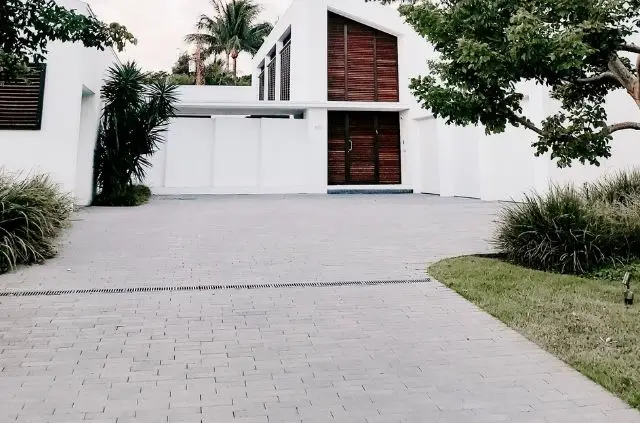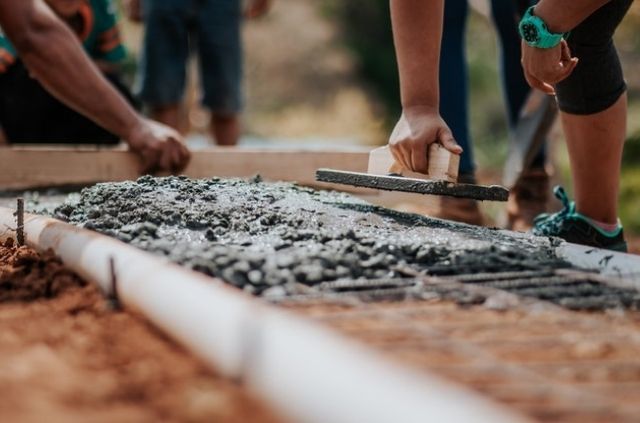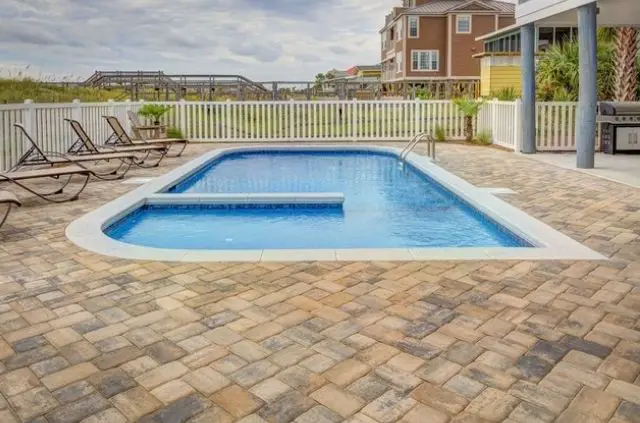Is Paver Edging Necessary?
Building a patio or walkway can completely transform the appearance around your home. Pavers are not only cost effective, but they look much better than plain concrete. This brings us to the following question: is paver edging necessary?
Paver edging is absolutely necessary if you want to create professional looking results. Edging keeps the blocks in place and prevents them from shifting with age. Pavers can move from extreme weather changes and during normal use when people walk on them.
What is Paver Edging?
Paver edging is a material used to create a perimeter when building a patio or sidewalk. This durable plastic has two important benefits. For starters, it keeps the base layer (usually sand or gravel) from washing away in the rain.
This initial layer is needed to prevent the pavers from sinking in wet conditions, but it also acts as a barrier that holds sand in place. Another reason why you need paver edging is that it can prevent the blocks from shifting.
As people walk on the surface of your patio or walkway, weight is being pressed down on the blocks. As time goes by this can force the pavers to move from their original location. This problem won’t happen when paver edging has been installed first.
How to Install Paver Edging
The below guide will walk you through a general step-by-step process to help you install pavers and paver edging. If you want this project done correctly, it also helps to install sand and gravel as a base layer. The exact amount of time for this project will vary depending on the size of your area.
1. Map Out the Area
Before beginning this outdoor project, it’s important to calculate how much material you will need. If you’re building a patio for example, multiply the length and width of the area for the square footage.
For example, a 20 x 20 foot patio will be 400 square feet. This number will come in handy when it comes time to buy the pavers. It helps to purchase a little more than this number, just in case you make a mistake.
You can then figure out how much edging will be needed, by adding each side of the perimeter. If we use the same example above, a 20 x 20 foot patio will require 80 feet of paver edging. Don’t forget to buy spikes to secure the edging to the ground.
2. Get Leveling
Now that you have gathered all of the necessary materials, it’s time to move some dirt around. Before laying down the blocks you will need to make sure the ground is flat first. No outdoor surface will be perfectly level.
To level an area you will need a shovel, stakes, string, and a string line level. Begin by staking out the area and attached a string between 2 stakes. Use the line level to figure out the difference between the lowest and highest spot.
You can then begin moving the dirt from the high spots to level out the surface. A shovel will be fine for small projects but it can take more time for a larger area. You always have the option of renting a piece of equipment for this step.
3. Lay Gravel & Sand
When the area is perfectly level you can add a layer of gravel on top of the soil. As we briefly mentioned in the sections above, these rocks will prevent the pavers from sinking. It’s common for this to happen with age.
Gravel can also help keep the pavers in place after it rains. The block would shift without this layer and your patio would move over time. For most walkways around 4 inches of gravel will be enough to secure them in place.
You can make this layer even stronger by laying down concrete sand for added security. The sand will fill in all of the empty space and make the surface very secure. Run a flat board over the sand to make sure it’s completely flat.
4. Set the Pavers
You can now finally move on to installing the pavers. This is the step where your patio will begin to take shape. The exact steps will vary slightly, depending on the size and type of pavers you purchased.
This is a more general step-by-step guide, as interlocking pavers will have their own steps. Ideally, the best method for installing pavers is to start in a corner and work your way out. Avoid starting in the middle, as this will produce sloppy looking results.
When laying down the pavers, make sure to set them down flat. Installing the stones at an angle will cause damage to the layer of sand. If you were to do this over and over the sand will eventually become uneven.
5. Install Paver Edging
Once all of the pavers have been set, you can install the edging. Begin at one side and start to pull away the sand from your pavers. This can be accomplished with a concrete trowel and it helps to prepare the edge.
You will need to do this around the entire perimeter before moving on. Then install the edge restraint and set them securely against the pavers. Use spikes to keep the edging in place and prevent them from moving.
Each spike should be 1 foot apart around the perimeter of your patio. When all of the spikes have been installed, you can finish up by covering the paver edging with sand or dirt to keep it hidden.
6. Apply Locking Sand
This is the final step to installing pavers and edging on your patio or walkway. You will need to pour locking sand across the entire surface area, to further strengthen the pavers.
The locking sand will fill the gaps in between the pavers and prevent them from shifting. If the initial gravel base prevents the pavers from sinking, this sand will stop the pavers from moving around.
You can use a long handle broom to push the sand in between the pavers. Make sure to use enough sand, or it won’t have any effect. When you’re finished you can spray down the pavers with water to help the sand settle.
Final Thoughts
Hopefully this article has taught you that paver edging is necessary. This building material acts like a barrier that will help keep your patio or walkway from shifting over time.
Snow, ice, rain, and other extreme weather conditions will cause your pavers to move around. But using edging will keep the pavers in place and prevent them from shifting from these conditions.
Further Reading
Search Terms
- Is paver edging necessary?
- How to install paver edging






